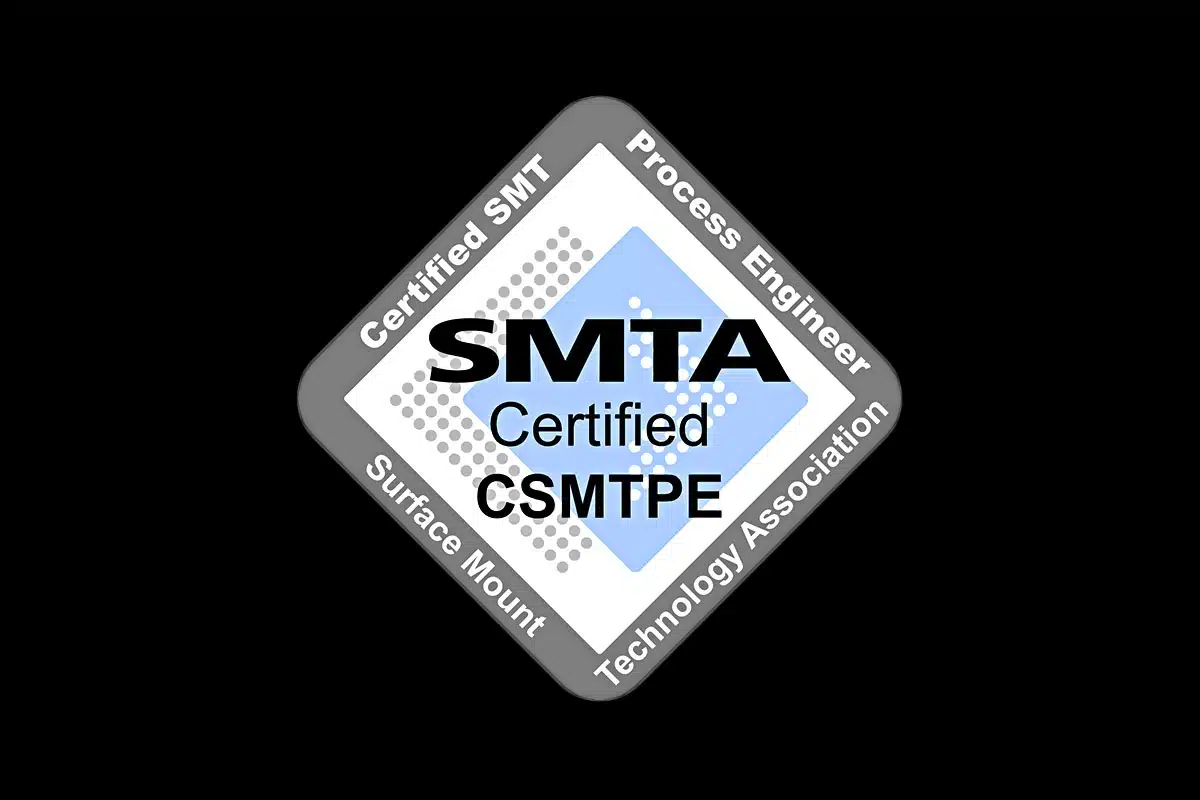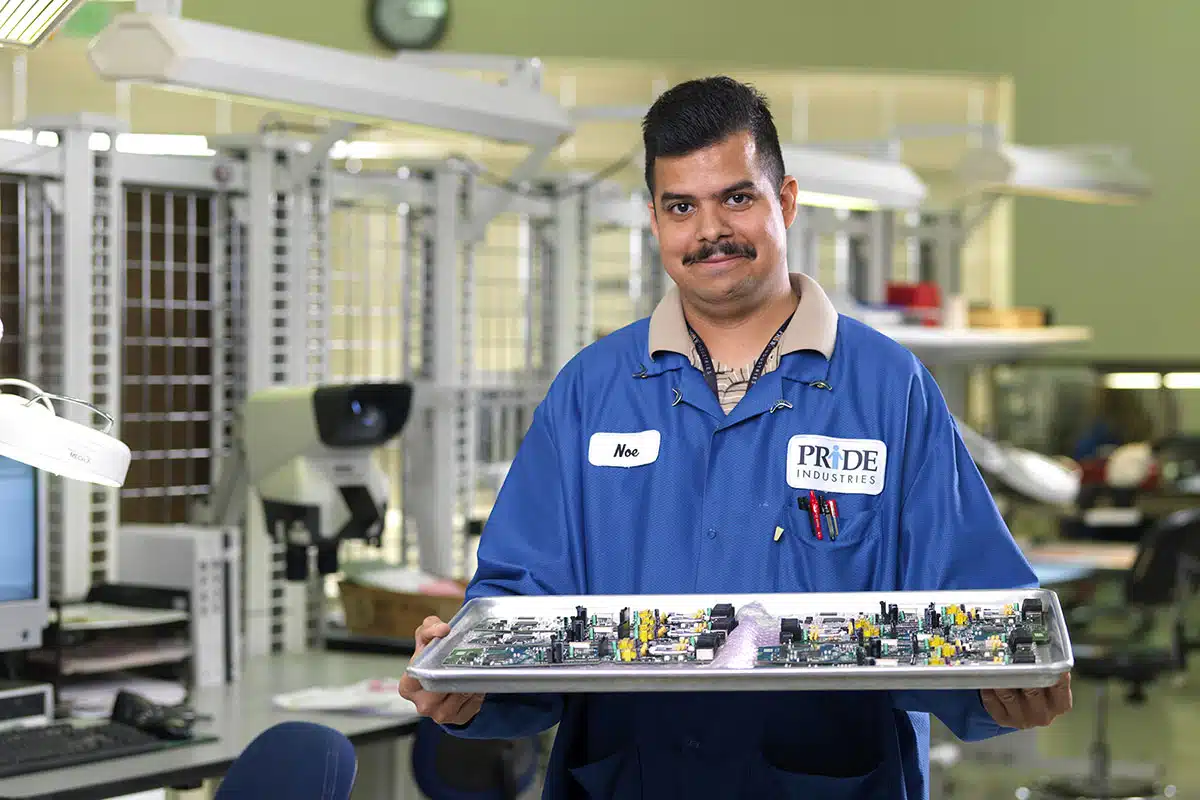There are several factors that companies typically consider when vetting a potential supplier of electronics manufacturing services (EMS), including: the supplier’s production capacity, the sophistication of its distribution and tracking systems, and its network of component suppliers. But if you want to get the most out of your EMS provider, you would do well to consider one other factor—the experience of the provider’s manufacturing engineers.
Partnering with an EMS provider that has its own engineering team will allow your company to temporarily expand its engineering resources. Doing so yields four significant advantages, allowing your company to:
- Save money
- Save time
- Modify products quickly
- Navigate supply chain disruptions quickly
The main reason you want your EMS provider to have qualified engineers is to boost your company’s engineering expertise. Maybe your latest product is a little outside your wheelhouse, but you don’t want to hire internal expertise just for that product. Maybe designing your product is taking longer than you expected, and you need a fresh pair of engineering eyes on it. Or maybe you’re busy with other projects and can’t give this product the engineering attention it deserves.
In each of these instances, it makes sense to bring on additional expertise. Because the engineers at your EMS provider work on multiple projects, they’ve likely already dealt with whatever challenges you’re facing. They have experience across an array of industries and know a few tricks from other products that can help ensure your product’s success.
As we move into the era of the smart factory, the engineering team your EMS provider offers will become more important to the success of your product.
How an EMS Provider’s Manufacturing Engineers Can Save You Time and Money
Perhaps the most important reason to tap the expertise of your provider’s engineers is to make sure that your product’s design is as functional and cost-effective as possible. That means looking beyond the product itself and scrutinizing every step of the manufacturing process.
While raw materials can be expensive, much of your product’s cost comes from labor. That’s why a review of your product’s prototype—through a DFM (design for manufacturability) lens—can yield significant savings in the long term.
An experienced engineer, one that has helped develop hundreds of products, can help you optimize your product’s design so that it can be made as quickly and inexpensively as possible, without sacrificing performance or quality. These engineers know how to streamline both machine and hand-processed operations and can ensure compliance with regulations. And if your design uses custom components, your provider’s engineers may be able to recommend less expensive, off-the-shelf substitutes.
A DFM review is especially important now that supply chains aren’t as predictable as they once were. In short, scrutinizing your product design with manufacturability in mind:
- Offers greater product consistency through optimized processes
- Lowers product loss by reducing the level of non-conforming products
- Ensures a high-quality product
- Lowers per-unit cost
- Reduces turnaround time for orders
- Can provide greater sustainability
- Can improve rework-ability
- Increases end-user satisfaction
Working with electronics engineers who have deep manufacturing experience ensures that your product’s manufacture will be as efficient as possible. A strong EMS provider should be able to review your data package and create the fastest, least labor-intensive process. These engineers can help you simplify your bill of materials, clean up your manufacturing line, and leverage technology.
Manufacturing Engineers Offer Expertise in Multiple Areas
While DFM is of primary importance, there are other issues to keep in mind when it comes to your product’s design. An experienced engineer can help you create a product design that enables easy testing—ensuring high quality and saving you money down the manufacturing line.
And if you have to modify an existing product’s design—perhaps to account for changing consumer demands—working with your manufacturer’s engineers will let you update your design in a way that minimizes the changes needed to the manufacturing process.
Is sustainability a priority for your company? Experienced contract manufacturing engineers are used to planning the entire lifecycle of the product. They can help you design products that use less electricity, for example, or that use lower VOC conformal coatings. They can also make it easier to extract useful components for resale at the end of the product’s lifecycle—an increasingly popular secondary revenue stream for electronics manufacturers.
Engineering Expertise is No Longer a Luxury
As manufacturing processes become more complex, and we move into the era of the smart factory, the engineering team your EMS provider offers will become more important to the success of your product. Greater automation means greater complexity. An engineer can help design a manufacturing process that leverages the latest technology, like the Industrial Internet of Things, autonomous robots, AI, and advanced materials. Engineers know how to interpret the data gathered from the IIoT, and can move quickly to optimize the manufacturing process to maximize efficiency.
But no matter how simple or complex your product is, your EMS provider’s engineers should listen to you. Their priority should be to design a process that helps you achieve your priorities, whether performance, sustainability, or cost. A strong engineering team will be able to help you balance your priorities so that you can achieve your manufacturing goals.

Choosing an Engineering Team You Can Work With
To make sure your EMS provider has the skill set to truly help you, check to see if they have earned appropriate certifications related to your needs. For example, do their team members have SMT Process Engineer certification from SMTA? This elite certification signifies that the engineer you are working with can ensure that your complex PCB assembly fits with the best manufacturing process. SMTA certification also means that your contract engineers know how to modify product designs when requirements change and can resolve production issues quickly.
SMTA-certified engineers are also able to clearly explain design constraints and tradeoffs, making it easy for you to determine which product features are cost-effective and which won’t pay for themselves.
How to Work with Your Contract Engineering Team
Once you have chosen a contract EMS provider with the expertise you need, how do you work with their engineers to get the most from the partnership? Here are a few points to keep in mind to maximize your return:
- You should keep DFM in mind from the beginning. But it is good to run a DFM check, even in later stages of the design process, to make sure nothing was missed. So have your EMS provider’s engineers do a thorough DFM review of your final prototype—especially if this is the first time they are seeing your product.
- Experienced engineers have tested hundreds of products. Leverage that expertise by having them help develop the testing procedures for your device.
- Likewise, use your contract engineers to help define the requirements for manufacturing process steps.
- Make clear in your agreement how you plan to work with your contract engineering team. At which stages of design and development will you be bringing them in? Clarifying this up front will improve communication and help avoid delays.
- If your contract manufacturer’s engineers will be working closely with your engineering team, be sure to spell out in your agreement who owns the information once the project is finished. It is highly unusual for an EMS provider to assert any ownership of a project they worked on for a customer, but it is always better to be safe than sorry.
Following these simple rules will ensure a strong working partnership between your company’s engineers and your supplier’s engineering team. And building a partnership brings advantages that are as significant as they are hard to measure. After all, a supplier merely delivers a service. But a partner looks out for your interests.
Electronics Design and Manufacturing Services









